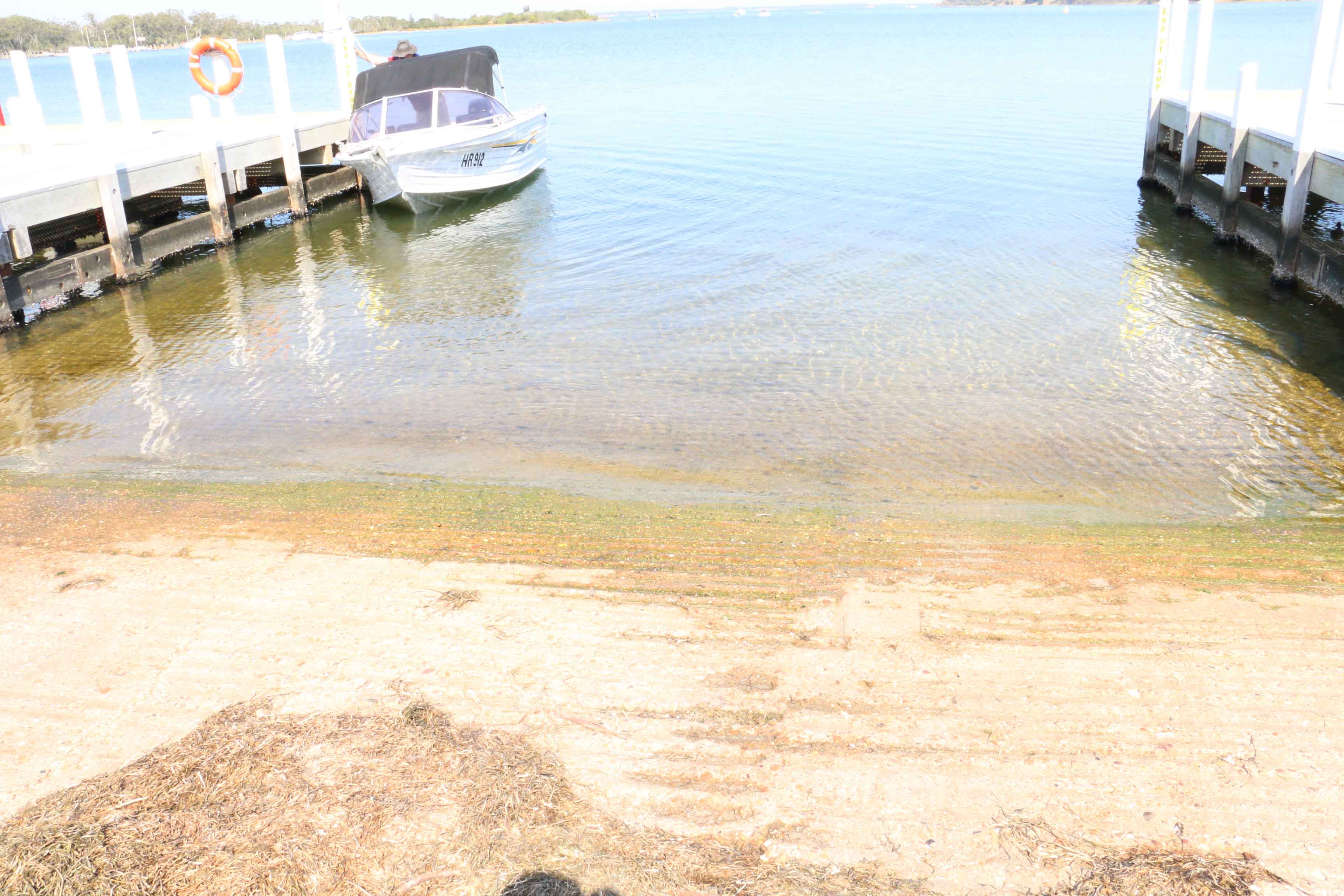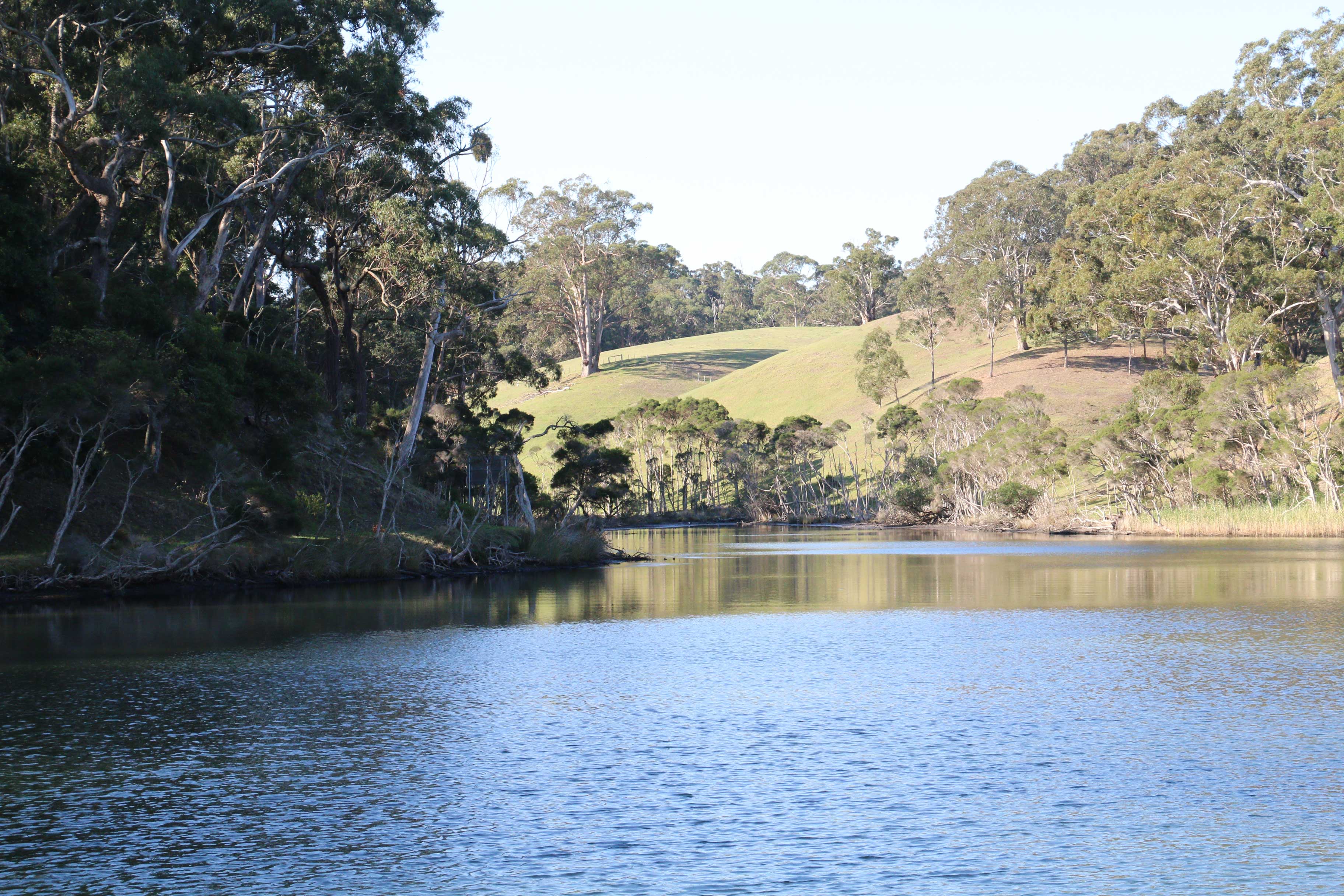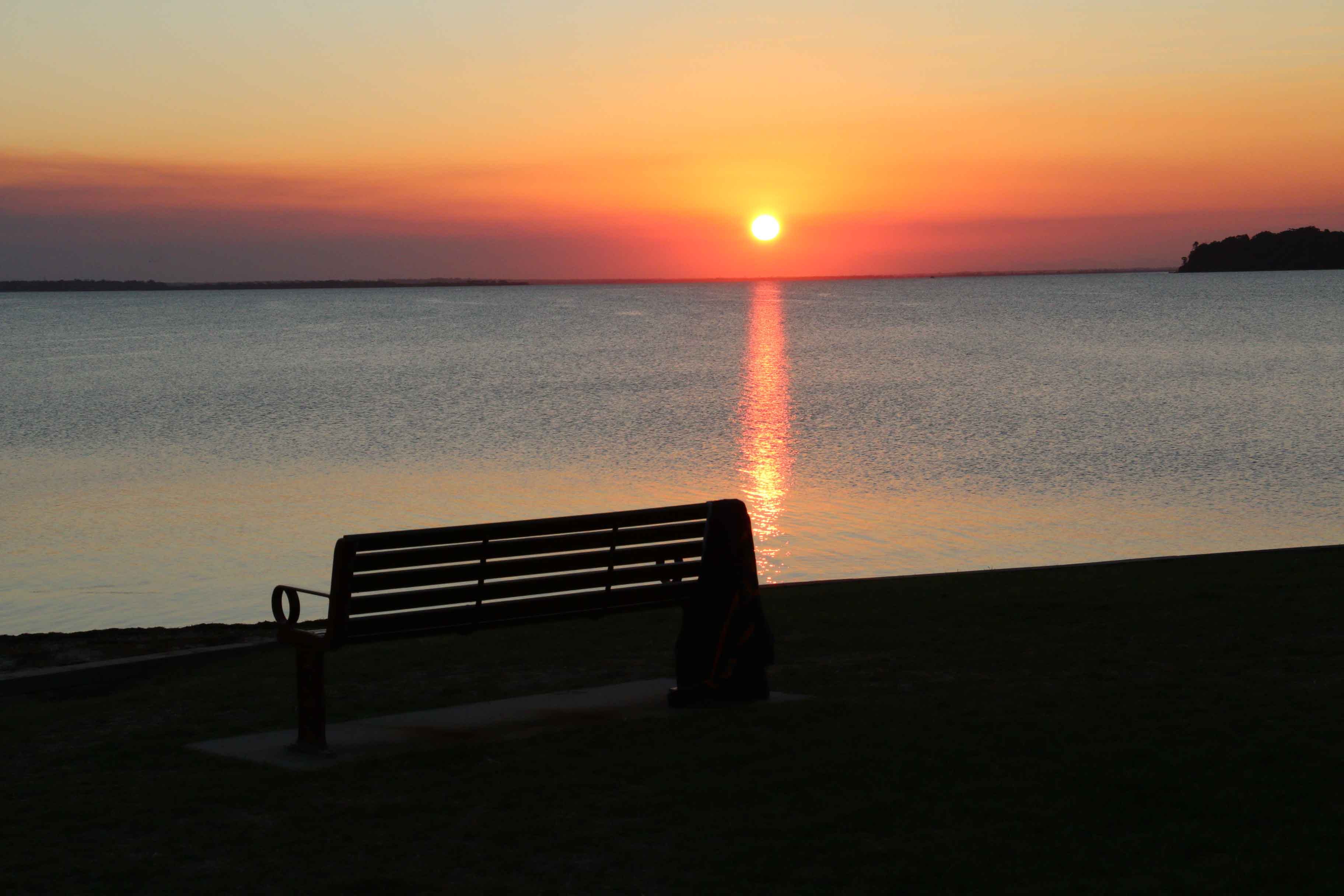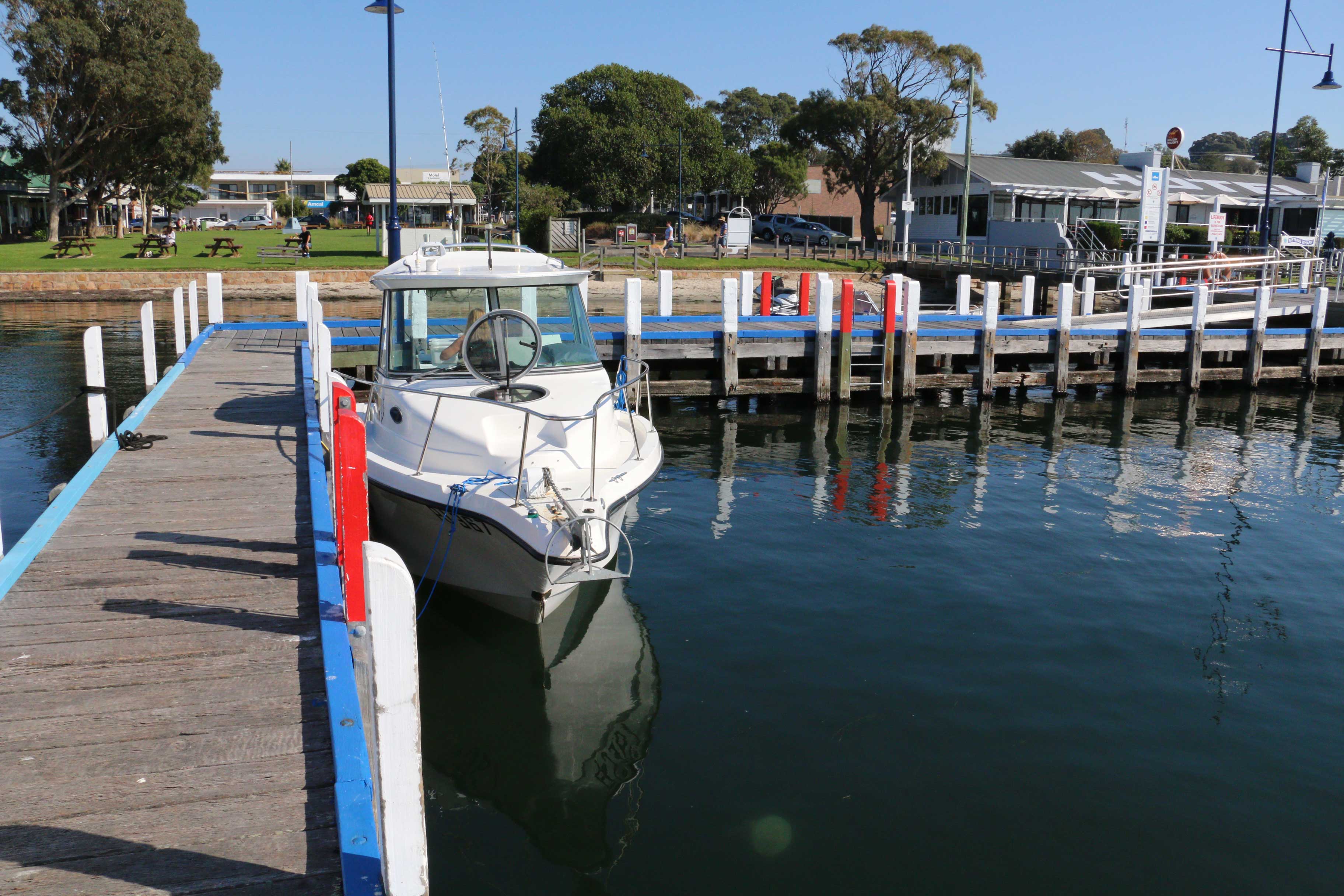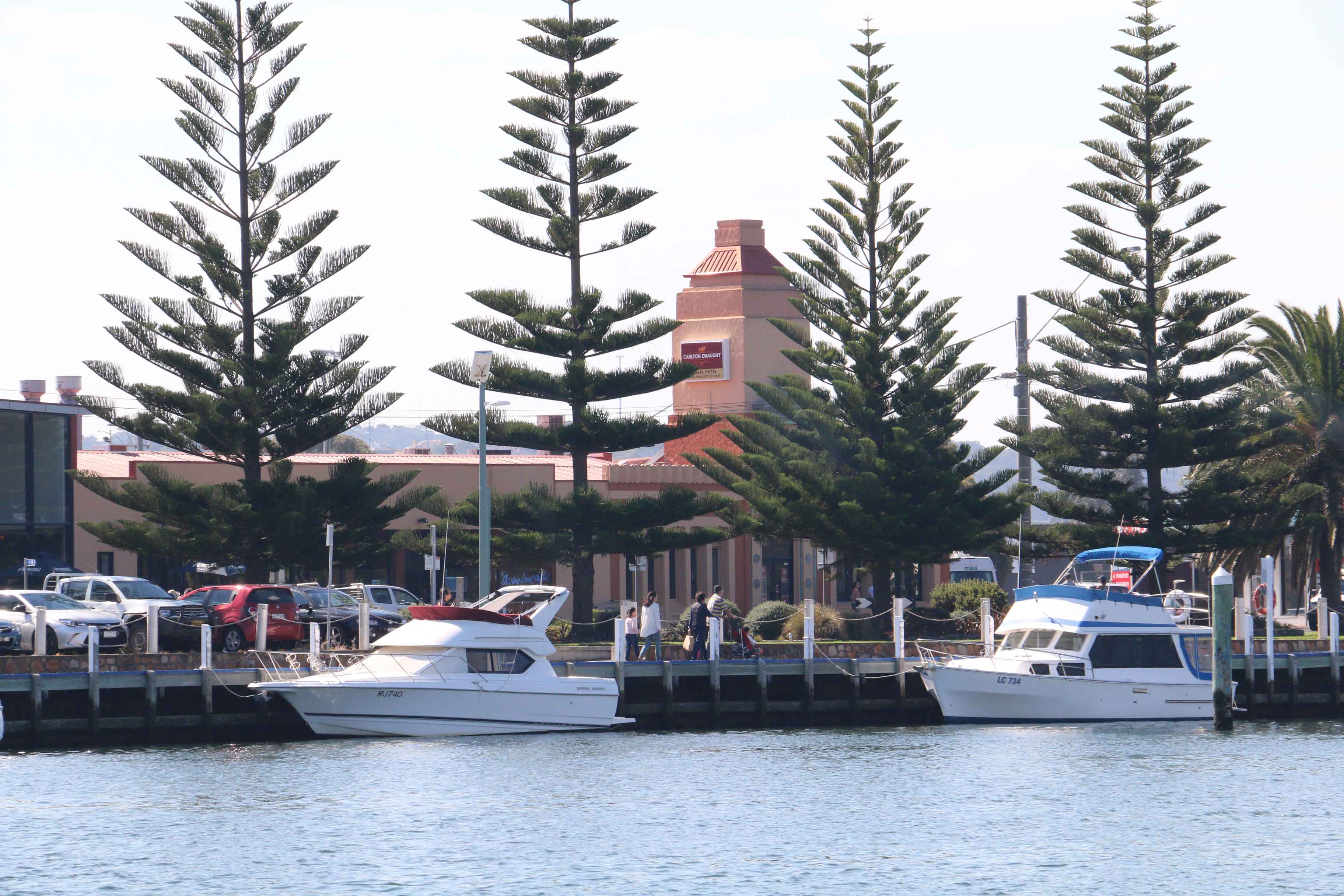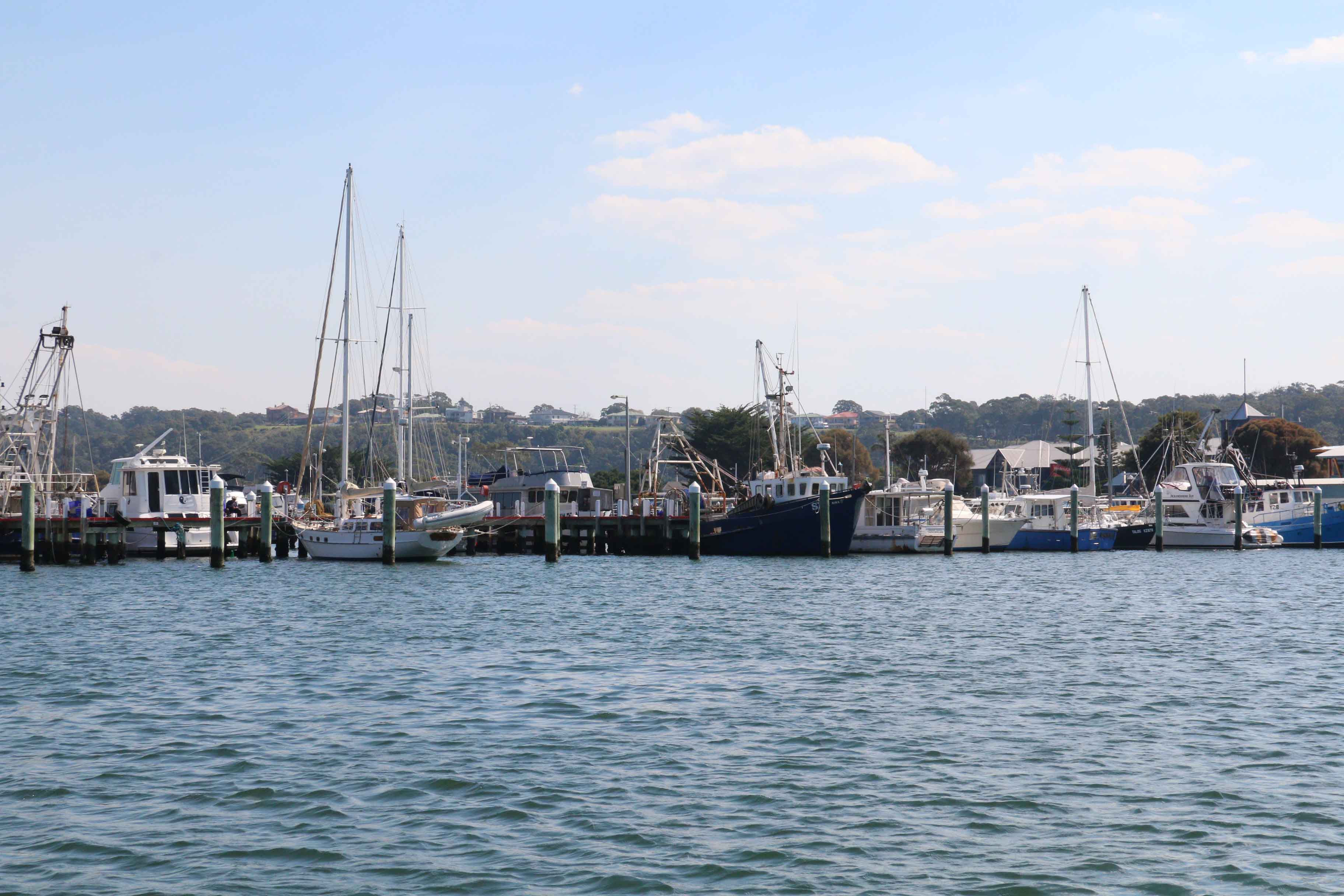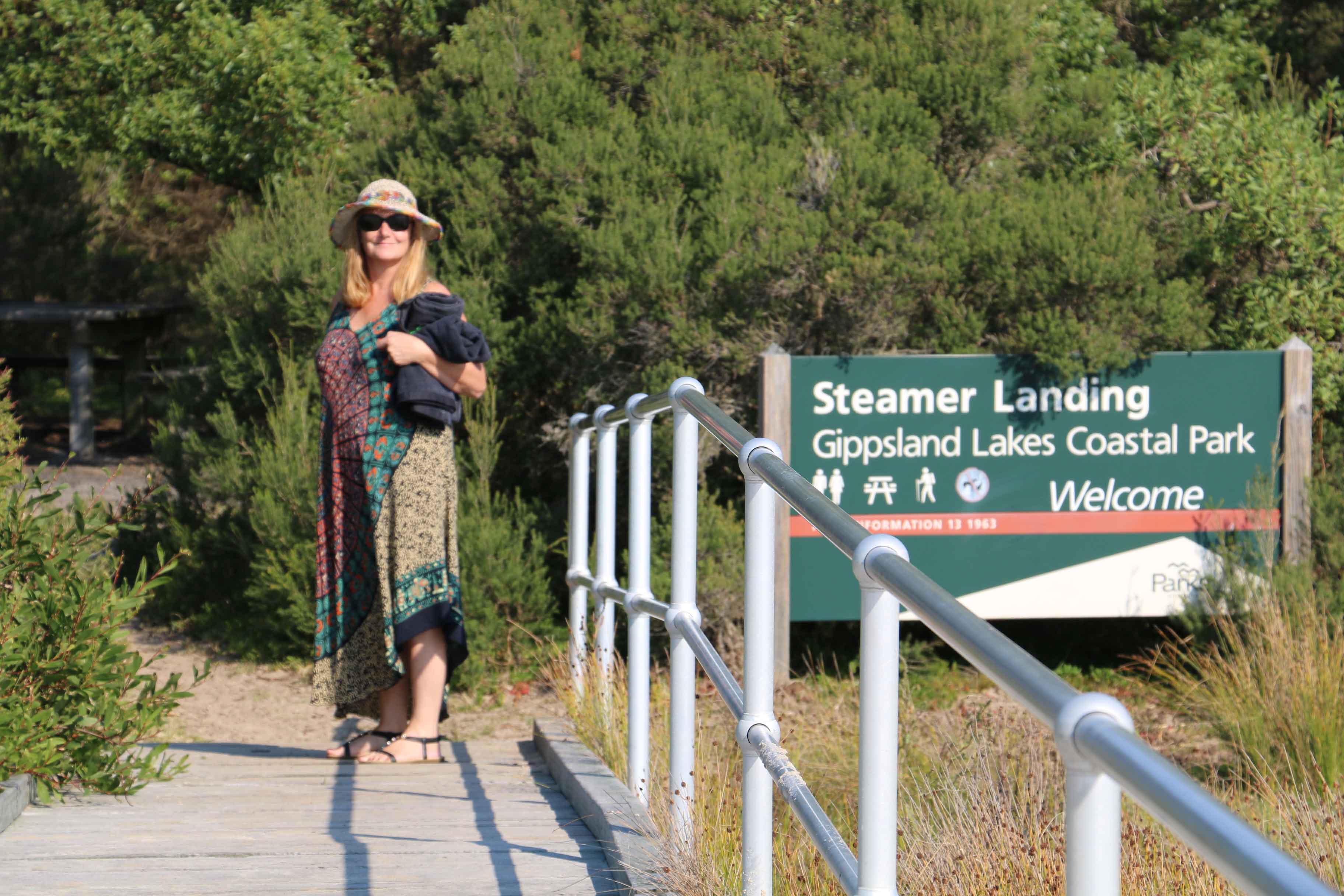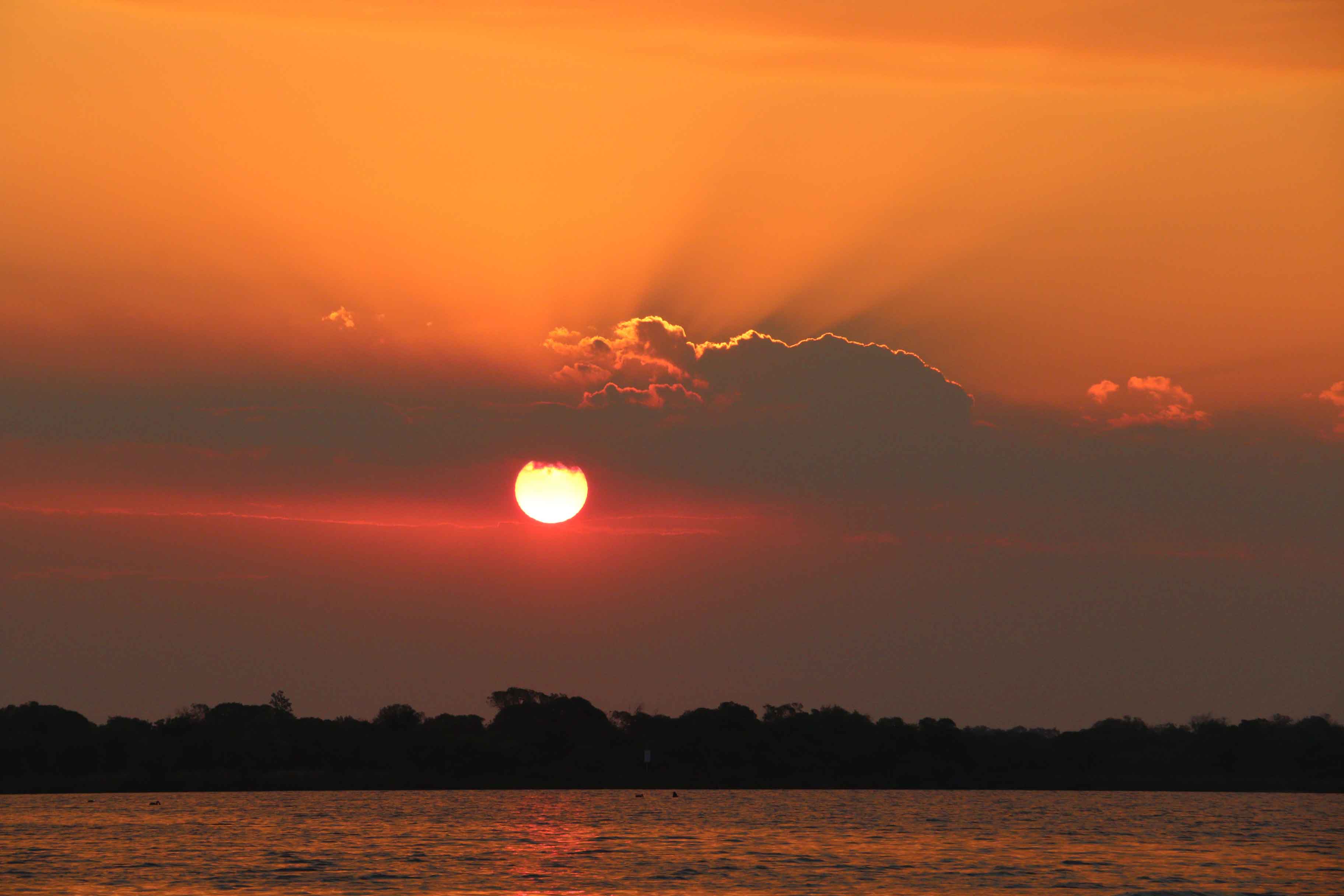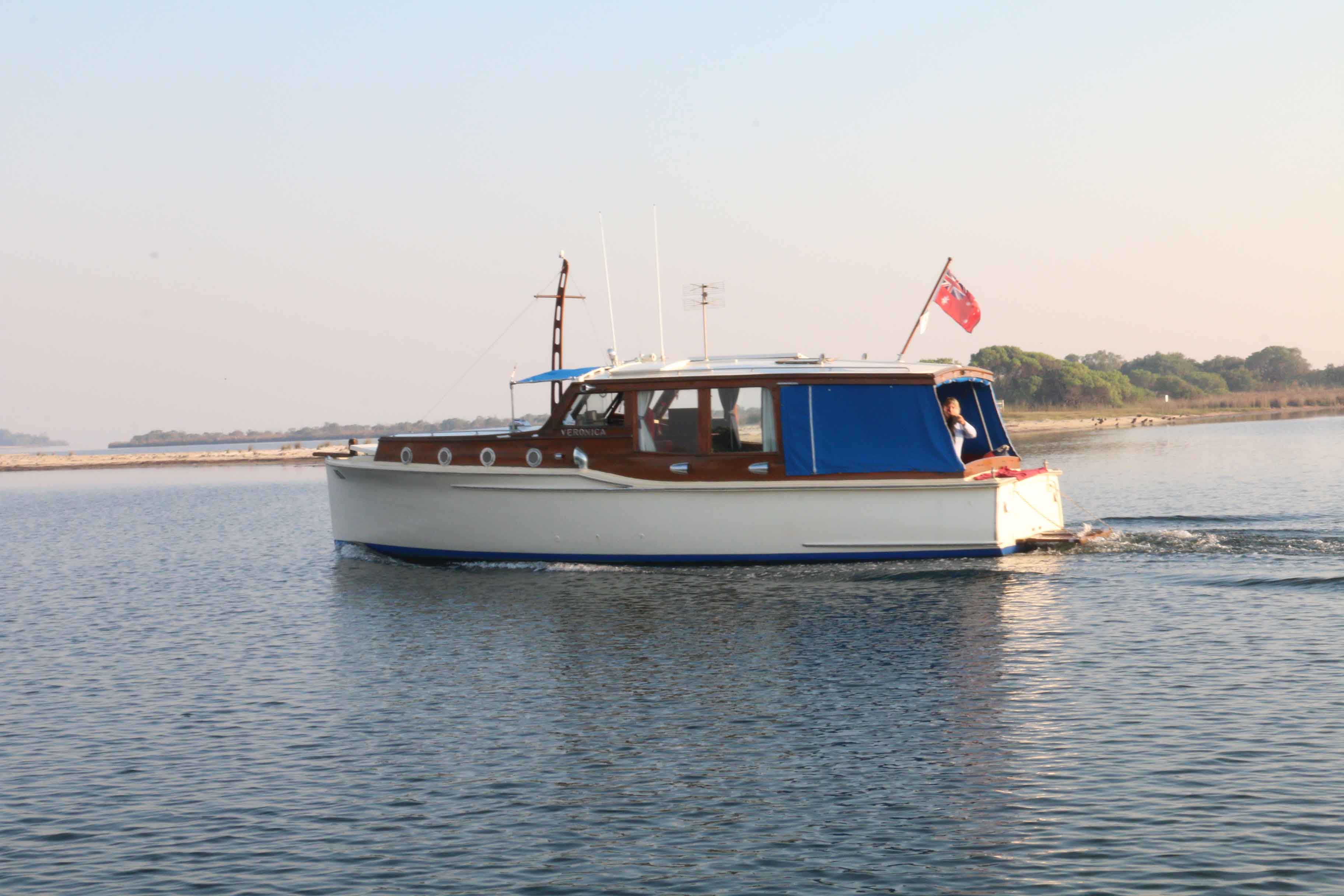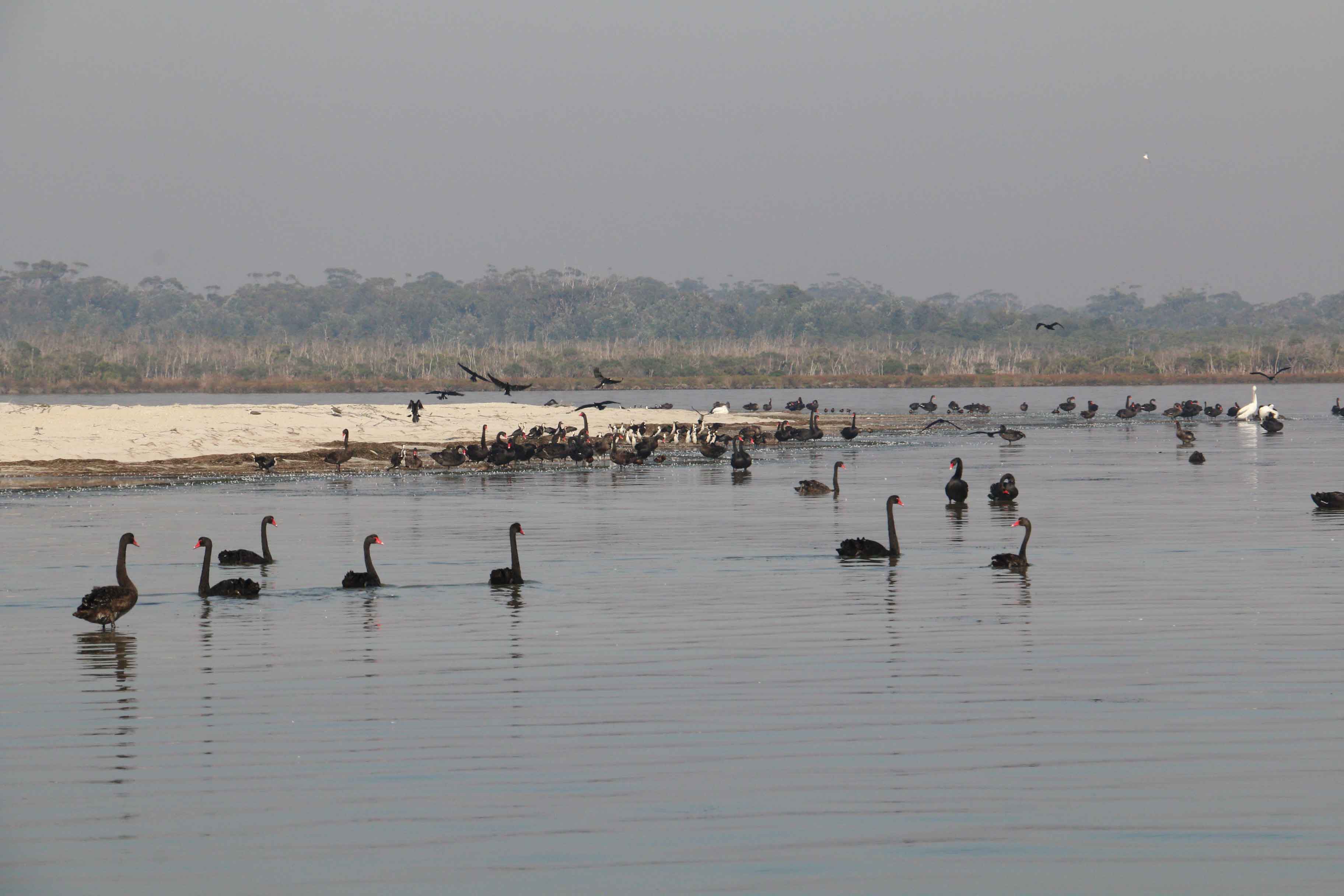Gippsland Lakes Itinerary

Day 1
It was early April and Willy Weather was showing that Eastern Victoria was about to move into four days of fine weather with winds less than ten knots for the entire four days! Can you believe that? It’s an opportunity too good to miss for one last shot at some good weather for a few days away on the water in Victoria.
I’ve been wanting to check out the Gippsland Lakes for a while so we pack the boat and head off to Paynesville which is described as the ‘boating capital’ of the Gippsland Lakes. It took about six hours from the Mornington Peninsula which is longer than necessary but we weren’t in a rush and stopped in Traralgon for lunch and a good coffee at the 3 little birds cafe.
By the time we arrive at Paynesville its getting onto four o’clock and now that daylight savings has finished there’s not much light left and we realise that because we’ve dawdled a bit we haven’t left enough time to go exploring in the boat. That means staying overnight in the boat at Paynesville which is a great excuse to have dinner at the local pub.
After launching the boat at what is called the North Harbour Boat Ramp, we cruise around to the waterfront opposite the pub and guess what, there is free berthing on the wharf right opposite the pub, the bakery and a coffee shop! How good is that? It turns out, being able to berth outside a hotel (and shops) is a common theme in the Gippsland Lakes, with free public and overnight berthing opposite the Metung Pub, the Loch Sport pub and the Lakes Entrance Pub as well as the Paynesville Pub.
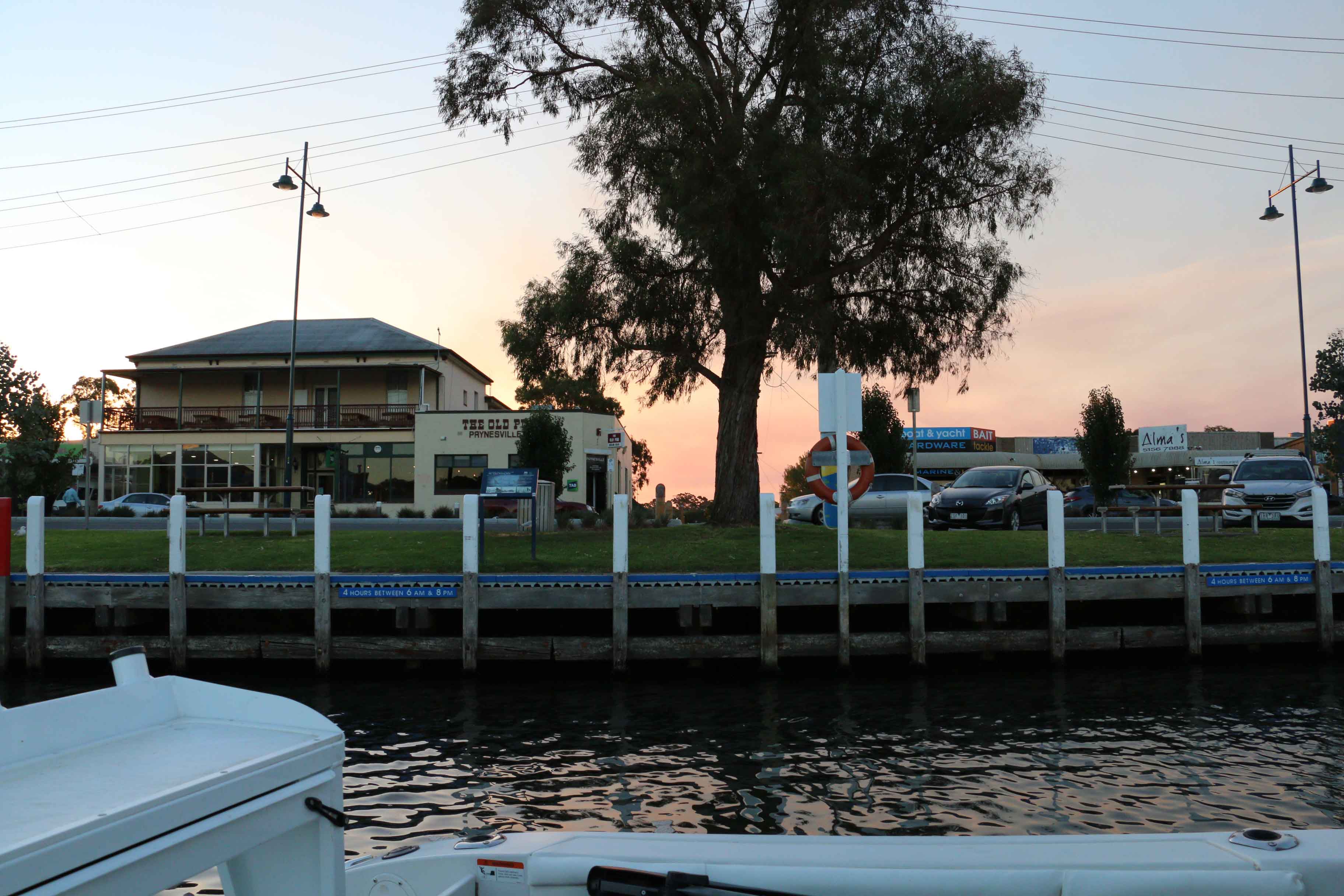
Berthed outside the Paynesville Pub
Now if you have never been to Paynesville, you will find the main jetty and boat berthing area in a channel called the McMillan Strait which is a body of water running in a roughly north-south direction between the town of Paynesville and a relatively large island called Raymond Island. It is a well protected channel which also gives access to the residential canal running through part of the Paynesville township.

The Gippsland Lakes in the eastern part of Victoria consists of three major lakes; Lake Wellington, Lake King and Lake Victoria, several coastal lagoons and seven rivers; the Latrobe, Avon, Nicholson, Tambo, Mitchell, Macalister and Thomson rivers. The lakes are all joined, providing water access to all of the lakes and rivers from any launching location in the system.

Anyway, we quickly tie up to the wharf and head into the pub for dinner. It is a beautifully calm night, which foreshadowed four days of perfect weather. The pub meal was great and I can highly recommend the seafood platter. As we turned in for the night, it suddenly occurred to me that we had absolutely no plan for the next four days and not being familiar with the Lakes region, I needed advice about how to get the most out of our time there on the water! So I contacted friends who regularly visit the area and asked them for ideas and they promptly provided a four day itinerary which as it turned out we followed fairly closely with just a few additions because it was designed for a sailing vesse and were able to cover a bit more water in the ‘stink boat’. (The sailing itinerary can be found at the end of this article if you are interested).
We learn very quickly that the Gippsland Lakes are extremely well set up for recreational boating. There are three boat ramps in the Paynesville township; the North Harbour Ramp, the Esplanade Ramp and the Fort King Ramp. The North Harbour ramp is a well protected two lane concrete ramp with ample car parking and toilets complete with two showers that provide HOT water for free!
The Esplanade boat ramp is also a good two lane ramp which according to local intel is adversely affected by an easterly wind and gets very busy at the height of summer. This ramp is on a very pretty stretch of white sand, clear shallow water and shady trees. A perfect place to swim with the kids.
There are 3 other boat ramps just outside the Paynesville township as shown on the Gippsland Lakes Ports map. (above) Two are in Newlands Arm which we didn’t explore and the third is on Raymond Island. Now there is a car ferry which travels the very short distance across the Mc.Millan Strait from Paynesville to Raymond Island, but if you have a boat it would be slightly silly to pay for the ferry trip to launch from the island, obviously…(unless you live on the island!)
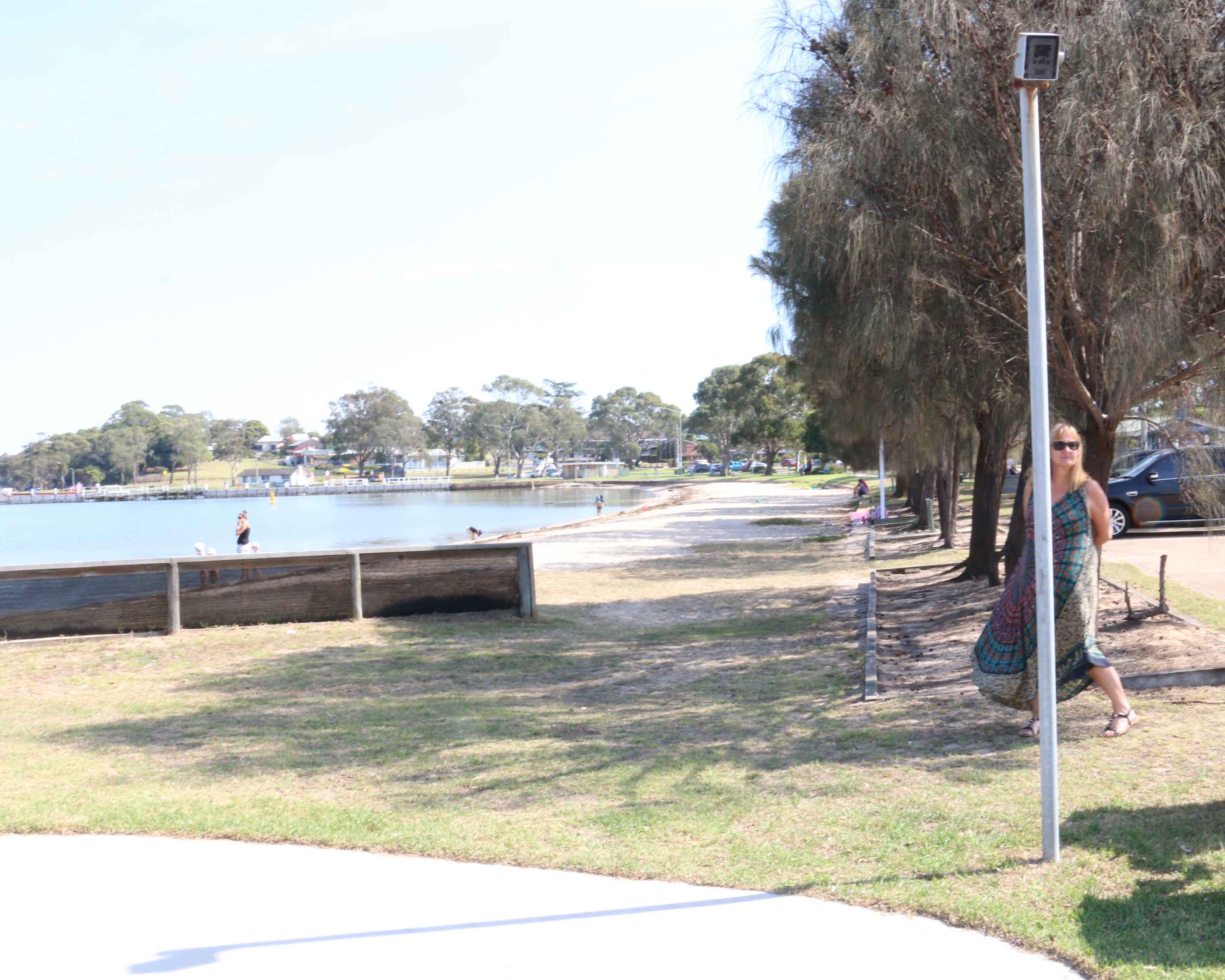
The Esplanade Beach, Payneville. Note the shade along the sand.
For detailed descriptions of the Paynesville boat ramps, including local knowledge and photographs, please visit the ‘Boat Ramps’ menu tab
The third ramp is the Fort King boat ramp on the north-eastern side of the township. The locals say this is a good ramp to use when the others are busy because only the locals use it. There is a very good reason for this, there are no signs telling you where it is so only the locals know about it! This ramp is not as good as the other two and is shallow. There is however a very large car park attached to it with toilets, hot showers and a fish cleaning table.
Day 2
Up early, as you do when you are camping and the seagulls park themselves on the wharf right beside your cabin and start their early morning discussions about finding chips and whatever else it is they plan to do for the day.
It is a complete glass out as far as the eye can see as we slowly head east to Bancroft Bay and the Metung area intending to camp the night either in Chinamans Creek or Box creek or maybe outside the Metung Hotel if possible.
On the way to Metung we pass a few yachts which because of the lack of wind, would have been bobbing around going no where except that it was even too calm to be bobbing. Consequently they just sat there going nowhere. It is at these times that owning a ‘stink boat’ has its benefits…
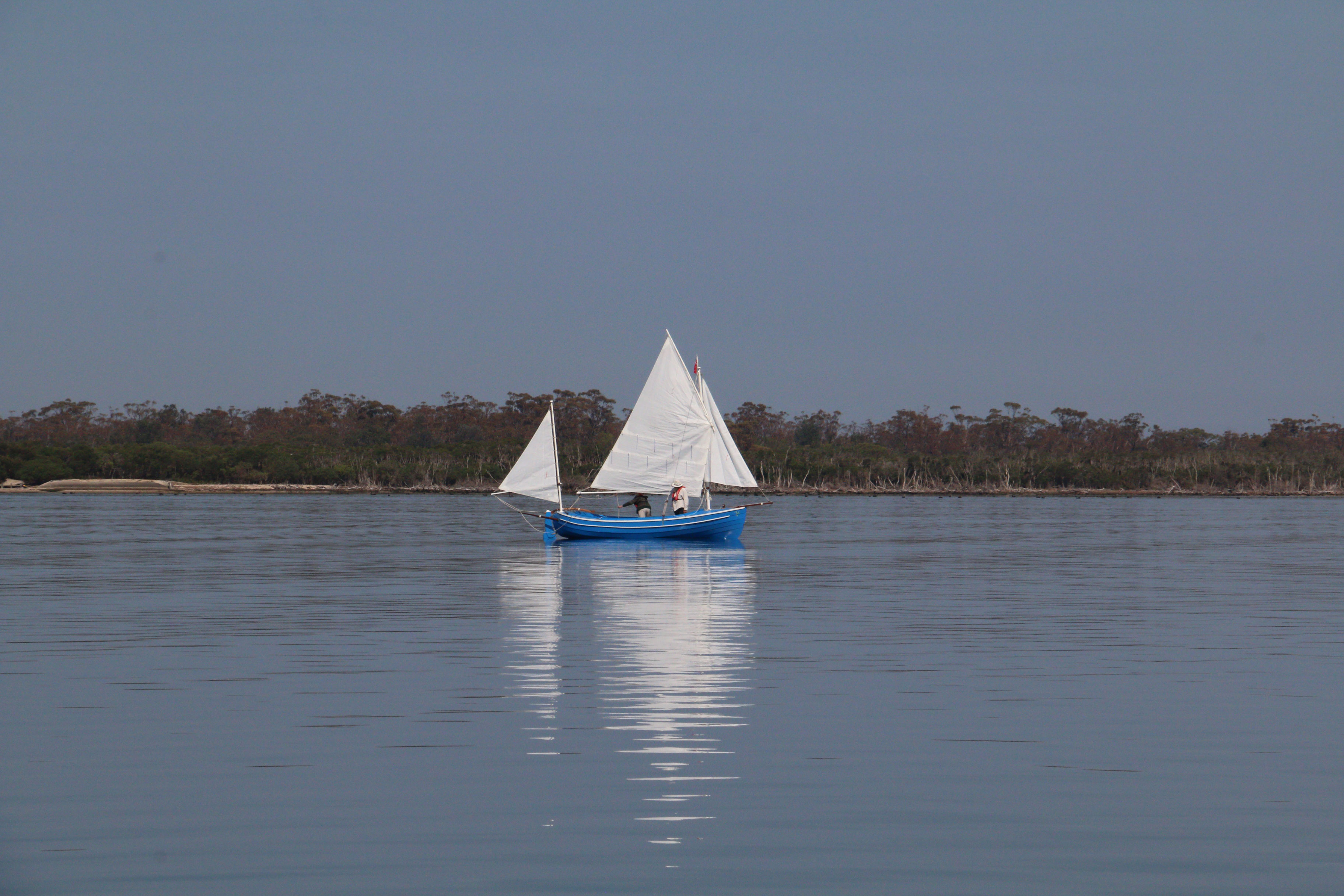
No wind…
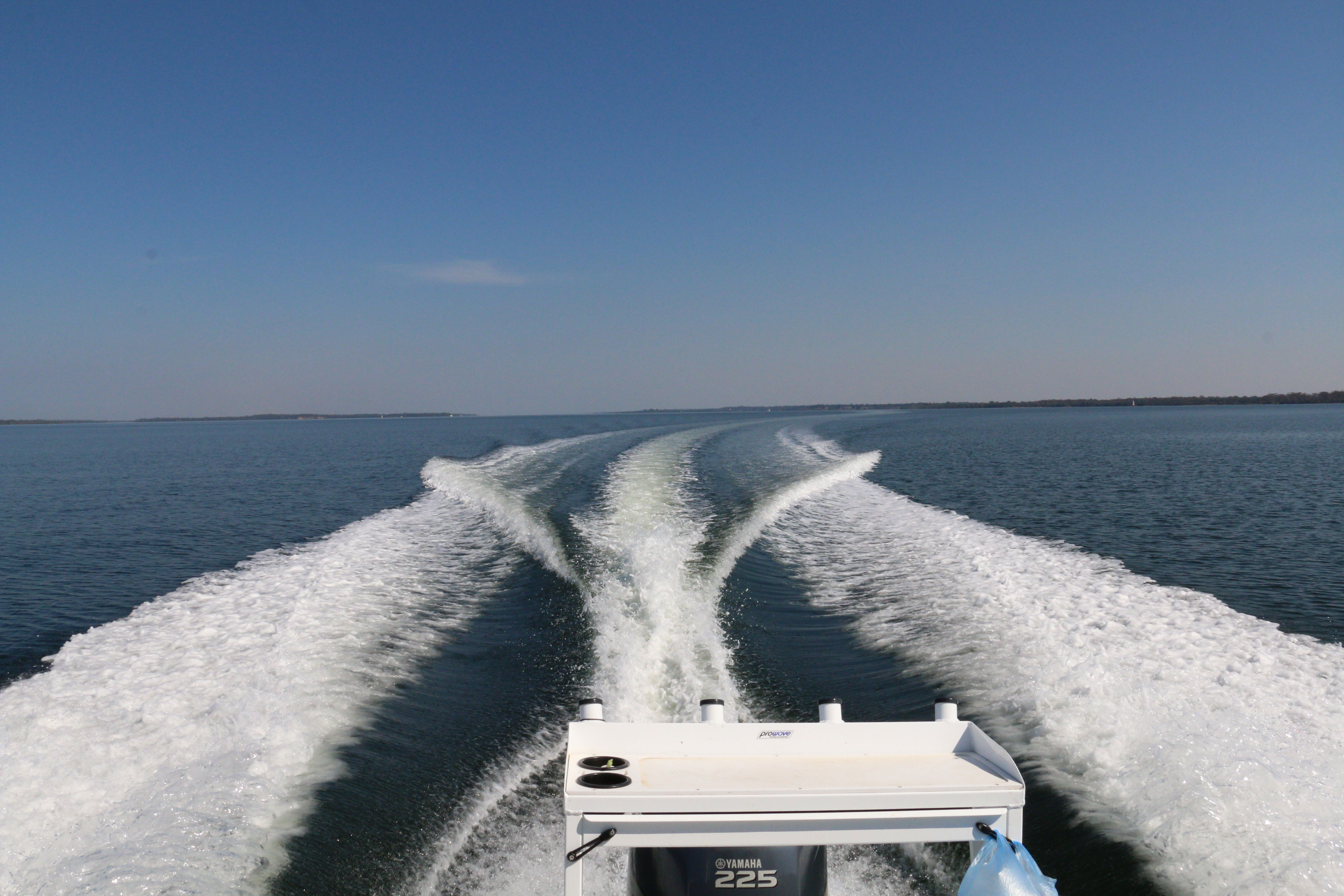
…no problem!
After a short recce of the Metung boat ramp, which incidentally is very good, we checked out the berthing at the Hotel/township, (which was also very good) and then went exploring in Chinamans Creek and then Box Creek.
Both are beautiful little anchorages which are very well protected from all winds except possibly a cyclone. These creeks have quite a lot of private moorings, especially Chinamans Creek which also has the moorings for some of the commercial charter operators on the lakes, however you can easily find a quiet corner on the water amongst the bush and do nothing except eat lunch, listen to the birds and have a snooze. This of course is exactly what we did.
After such a busy afternoon we thought we would head over to Metung and have a quiet drink in town and spend the night at the wharf there, which as I previously mentioned is coincidentally opposite the pub. After a walk in town, (a short walk, it’s not a big town), we ended up on the beach looking westward across Lake King towards the setting sun and got some spectacular photos thanks to the smoke from bushfires in the hills to the north of the Gippsland Lakes.
As it happened we didn’t dine at the pub, choosing instead to have dinner in one of the local restaurants, a place called Nautica. The food was great and the service was even better.
Day 3
It is worth mentioning again that the authorities who manage the lake, the East Gippsland Shire, Gippsland Ports (http://www.gippslandports.vic.gov.au/) and the Shire of Wellington have done a truly magnificent job on setting up the lakes for recreational boating. The Gippsland ports website is particularly useful as far as maps and boating guides go. Each jetty or wharf we tied up to was not only well maintained, but very well marked with a colour system to explain exactly what could be done on that jetty or wharf.
The horizontal top rails on each jetty are painted in particular colours that boaties can clearly see when approaching the jetty. The colours denote which area of the jetty is for temporary berthing – white, berthing only for collecting peoples/goods – yellow, short term including overnight berthing – blue and prohibited berthing – red. This same system is used right throughout the areas we visited regardless of whether it be in the townships or the coastal parks.
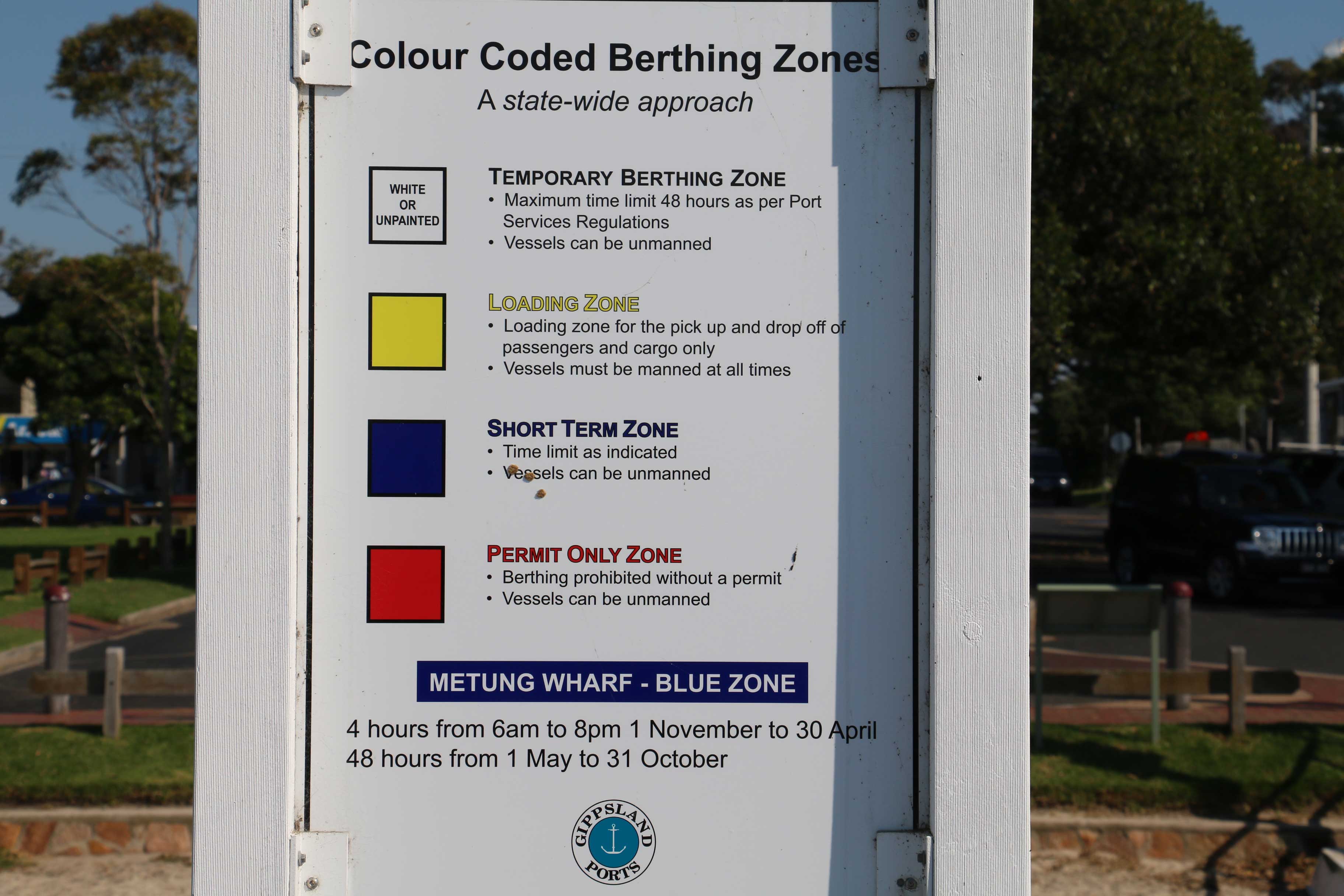
Clear signage abut what you can and can’t do
It used to be the case that Lakes Entrance was the centre of activity in the Gippsland Lakes, and there are probably many people who haven’t been to the lakes for years who still think this is the case. We cruised over to Lakes Entrance after leaving Metung taking the scenic route via the Rigby and Hopetoun channels. Caution is required here as the water is not deep on either side of the channel and the closer you get to the ‘actual’ lakes entrance, the stronger the current gets.
Lakes Entrance is clearly still the commercial fishing hub for the region with many fishing and oil industry (for the Bass Strait oil rigs) commercial boats berthed here. The town has the obligatory public mooring wharf opposite the pub and this allows for berthing the boat in the middle of town to go and do some provisioning. We intended to rough it that night so we bought a bag full of fresh prawns from the water front for dinner, and a bag of hot chips for lunch to take with us on our cruise back down the lakes to the Bunga Arm where we intended to camp for the night.
Gently cruising, it takes about an hour to get from Lakes Entrance into the Bunga Arm which is south west of Raymond Island. We had to make a minor detour after some poor navigation almost ran us aground on a large and very shallow grass bank.
The natural beauty of the Bunga Arm area is astounding. There are several small islands and large shallow patches you will have to navigate but the channels are clearly marked and the water deep enough even for keelboats. The tidal range in this area of the lakes is very small and the level of the water does not change much unless you happen to be there for a king tide.
There are two jetties to tie up against in this area, one at a place called Steamers Landing and the other at a place called Ocean Grange. If you prefer a bit more solitude, then you can travel further east along the Bunga Arm and simply pull up against the bank. There are also many poles along the shore to tie up to. Both the jetties are in very good condition and both provide short access tracks from the lake to the ninety mile beach. How many places in the world can you go where there is ninety miles of spectacularly pristine ocean beach with hardly a soul on it? Golden sands and crystal clear water as far as the eye can see!
We stayed overnight at the Ocean Grange jetty after badly embarrassing ourselves with a pathetic display of seamanship which involved crashing into the Steamers Landing jetty bow first and having the anchor freefall from the bow before we had come alongside. I’m not sure if this was the reason why I opted to move on to the Ocean Grange jetty and stay there for the night… There were several other boats berthed alongside with two trailer sailors, a Halvorsen motor boat, and two keel yachts. Everybody was friendly and happy to enjoy the serenity.
As we open a bottle of wine and eat our fresh prawns whilst the most beautiful sun sets, I wonder how long this has been going on. It is clear after speaking to the locals that they are well aware how special this place is, but I think to myself I’m pretty sure they have been keeping it a secret from everyone else.
Day 4
Unfortunately all good things must come to an end and the next day was the day we had to go home. The weather was still spectacular and it took all the willpower we had not to stay one more day but I figured as we had a lot more exploring to do, we have a very good reason to go back.
Locals making the most of the incredible conditions
We slowly motored back to Paynesville, retrieved the boat and after a good coffee at the Fig Café (https://www.thefigcafe.com.au/#bld) sadly headed home. I cannot recommend the Gippsland Lakes more highly. In fact, half of me doesn’t want to promote the area, preferring, as I’m sure many locals do, to keep the place to myself. This is an awesome boating location, a perfect mix of civilisation and pristine beach and bush.

